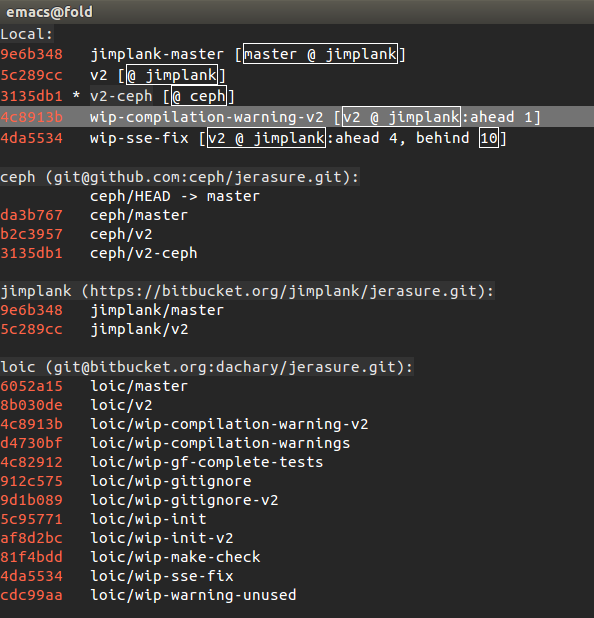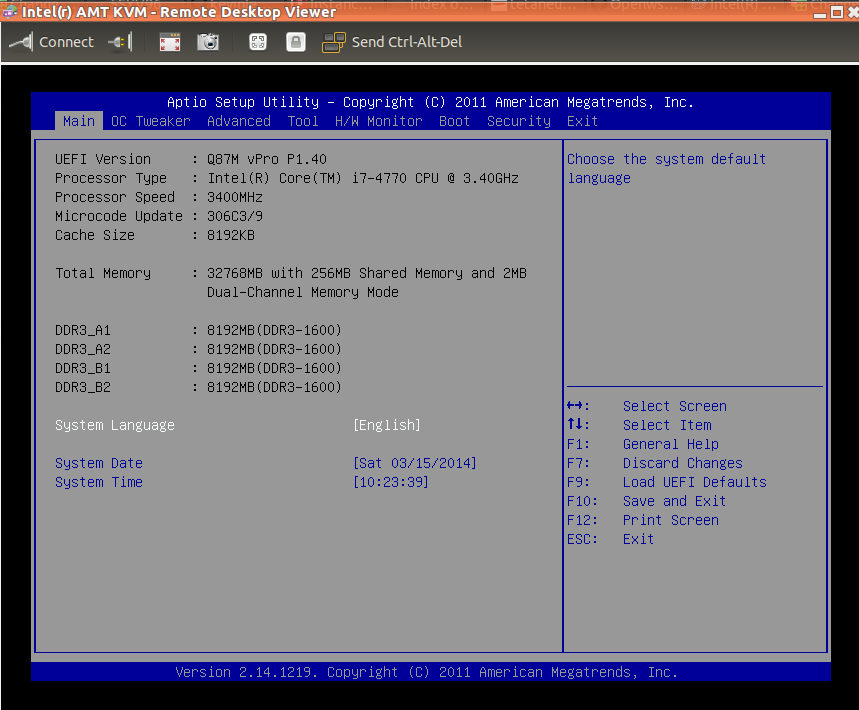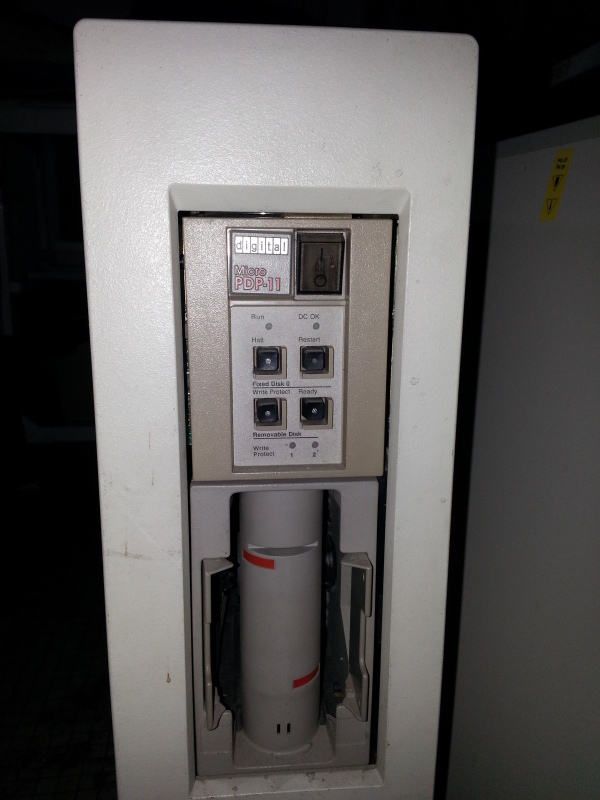Ceph uses GF-Complete stable branch (v1). Modifications required by Ceph were proposed to the master branch. While waiting for the corresponding pull request to be reviewed, a temporary branch (v1-ceph) was created in the Ceph name space for immediate use. The changes have been accepted in master, they are to be backported to v1
Continue reading “Backporting with magit”
Merging with magit and ediff
The jerasure v2 branch is merged into the v2-ceph branch.
Celebrate Firefly and Icehouse
If you’re in Atlanta Sunday 11th, may 2014 evening, for the OpenStack summit or any other reason, join us to celebrate the OpenStack Icehouse release and the Ceph Firefly release. There will be both OpenStack and Ceph developers present and no presentations planned : it’s 100% informal 🙂
Registration is here : Celebrate Firefly and Icehouse meetup page.
SSE optimization for erasure code in Ceph
The jerasure library is the default erasure code plugin of Ceph. The gf-complete companion library supports SSE optimizations at compile time, when the compiler provides them (-msse4.2 etc.). The jerasure (and gf-complete with it) plugin is compiled multiple times with various levels of SSE features:
- jerasure_sse4 uses SSE4.2, SSE4.1, SSSE3, SSE3, SSE2, SSE
- jerasure_sse3 uses SSSE3, SSE3, SSE2, SSE
- jerasure_generic uses no SSE instructions
When an OSD loads the jerasure plugin, the CPU features are probed and the appropriate plugin is selected depending on their availability.
The gf-complete source code is cleanly divided into functions that take advantage of specific SSE features. It should be easy to use the ifunc attribute to semi-manually select each function individually, at runtime and without performance penalty (because the choice is made the first time the function is called and recorded for later calls). With such a fine grain selection, there would be no need to compile three plugins because each function would be compiled with exactly the set of flag it needs.
Testing CPU features with Qemu
The Ceph erasure code plugin must run on Intel CPU that have no SSE4.2 support. A Qemu is run without SSE4.2 support:
qemu-system-x86_64 -machine accel=kvm:tcg -m 2048 \ -drive file=server.img -boot c \ -display sdl \ -net nic -net user,hostfwd=tcp::2222-:22 \ -fsdev local,security_model=passthrough,id=fsdev0,path=~/ceph \ -device virtio-9p-pci,id=fs0,fsdev=fsdev0,mount_tag=hostshare
The qemu CPU has no SSE4.2 although the native CPU has it:
$ grep sse4.2 /proc/cpuinfo | wc -l 4 $ ssh -p 2222 loic@127.0.0.1 grep sse4.2 /proc/cpuinfo | wc -l 0
The local development directory is a Plan 9 folder shared over Virtio mounted inside the VM:
sudo mount -t 9p -o trans=virtio,version=9p2000.L hostshare /home/loic/ceph
and the functional test is run to assert that encoding and decoding an object:
$ cd /home/loic/ceph/src $ ./unittest_erasure_code_jerasure ... [----------] Global test environment tear-down [==========] 16 tests from 8 test cases ran. (30 ms total) [ PASSED ] 16 tests.
Your first exabyte in a Ceph cluster
$ rbd create --size $((1024 * 1024 * 1024 * 1024)) tiny $ rbd info tiny rbd image 'tiny': size 1024 PB in 274877906944 objects order 22 (4096 kB objects) block_name_prefix: rb.0.1009.6b8b4567 format: 1
Note: rbd rm tiny will take a long time.
The footprints of 192 Ceph developers
Gource is run on the Ceph git repository for each of the 192 developers who contributed to its development over the past six years. Their footprint is the last image of a video clip created from all the commits they authored.
 video clip
video clip
 video clip
video clip
 video clip
video clip
 video clip
video clip
 video clip
video clip
 video clip
video clip
 video clip
video clip
 video clip
video clip
 video clip
video clip
 video clip
video clip
Continue reading “The footprints of 192 Ceph developers”
working with git submodules in Ceph
The gf-complete and jerasure libraries implement the erasure code functions used in Ceph. They were copied in Ceph in 2013 because there were no reference repositories at the time. The copy was removed from the Ceph repository and replaced by git submodules to decouple the release cycles.
Continue reading “working with git submodules in Ceph”
BIOS and console access via VNC
The AMT of an ASRock Q87M motherboard is configured to enable remote power control (power cycle) and display of the BIOS and the console. It is a cheap alternative to iLO or IPMI that can be used with Free Software. AMT is a feature of vPro that was available in 2011 with some Sandy Bridge chipsets. It is included in many of the more recent Haswell chipsets.
The following is a screenshot of vinagre connected to the AMT VNC server displaying the BIOS of the ASRock Q87M motherboard.




